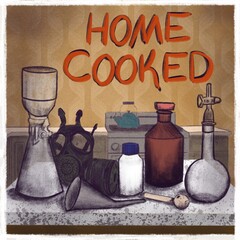In 2003, U.S. law enforcement discovered 23,000 meth labs within its borders. By 2017 that number had plummeted to 3,000, but more meth than ever before was pouring in across the southwest border. In the years between, people who use meth stopped making the drug in soda bottles and started buying cheaper, purer doses imported from Mexico. Today, meth-related overdoses have skyrocketed, while “mom and pop” labs have all but disappeared. In response to this dramatic shift, the Center for Rural Strategies and the Daily Yonder propose a multi-part podcast series about the global methamphetamine economy that exists today, and its explosive origins in Small Town, USA.
“Meth making a comeback, but it’s not your neighbors cooking it anymore,” reads a 2017 headline from the St. Louis Post-Dispatch. According to this story and a wave of others like it, since the mid-2010s, a purer and more potent “new meth” has dominated American drug markets. Much has been made of the difference between this meth and the “bathtub crank” once produced in haphazard home laboratories. One doctor told the New York Times, “It’s like [meth users] were drinking Mountain Dew and now they are injecting Red Bull.”
But what is actually different about this “new meth”? And why did this new supply chain come about in the first place? This reported series answers these questions, and sheds light on a drug crisis that remained quietly dominant in much of the rural U.S., even during the height of the prescription opioid epidemic. It showcases the voices of users, addiction treatment providers, justice-system officials, and public health experts attempting to respond to this deadly crisis in American communities big and small.
The current methamphetamine crisis claims many more users than did the home-lab era, and intersects with the spread of synthetic opioids in new and lethal ways. The DEA says it seized more than 115,000 pounds of meth in the year 2020, a 55 percent increase from 2018. And between 1999 and 2021, meth-related overdose deaths increased 50-fold, in part due to its increasing combination with fentanyl and fentanyl analogs. While the chemical effects of fentanyl and methamphetamine are nearly opposite one another, their supply chains and user bases have effectively merged. Growing numbers of people who use drugs report addiction to meth and fentanyl. And, as described by treatment court officials in Missouri – once the “kitchen chemistry capital” of the nation – “there are no pure substances on the street anymore.”
To chart the long trajectory of this poly-drug crisis, this podcast will transport listeners to the Mark Twain National Forest, where biker gangs like the Hell’s Angels cooked meth in the 70s; to rural police departments in the 1990s where the battle against the mom and pop meth lab dominated hearts, minds, and budgets; to today’s prisons, jails, and treatment centers overrun with people who use the highly addictive stimulant; and across the Southwest border, alongside journalists and researchers trying to understand the true nature of the drug trade in Mexico. We’ll hear from people who’ve used the drug in all its forms, emergency room doctors treating its symptoms, and cops frustrated by their utter inability to stem its flow.
Meth’s 21st-century makeover is a present and deadly crisis, but it’s also a case study in the recent decimation of rural public services, the failures of the War on Drugs, and the challenges of governing a global economy. Its story is urgent and misunderstood.
Hide full description
In 2003, U.S. law enforcement discovered 23,000 meth labs within its borders. By 2017 that number had plummeted to 3,000, but more meth than ever before was pouring in across the southwest border. In the years between, people who use meth stopped making the drug in soda bottles and started buying cheaper, purer doses imported from Mexico. Today, meth-related overdoses have skyrocketed, while “mom and pop” labs have all but disappeared. In response to this dramatic shift, the Center for Rural Strategies and the Daily Yonder propose a multi-part podcast series about the global methamphetamine economy that exists today, and its explosive origins in Small Town, USA. “Meth making a comeback, but it’s not your neighbors cooking it anymore,” reads a 2017 headline from the St. Louis... Show full description





